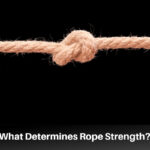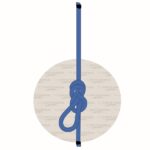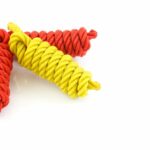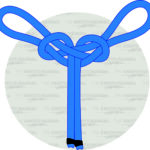The Double Figure 8 Knot creates two fixed loops in the middle of a rope. This is useful when you need to attach a rope to two anchor points or create a makeshift Bosun’s Chair.
In other sources, this knot may also be referred to as “Bunny Ears Knot”, “Dog-Eared Loop Knot”, “Super 8 Knot”, or “Double Figure of Eight Loop”. Sometimes, this knot is also confused with a Figure 8 Follow Through and Double Figure 8 Knot for fishing lines, but these are different knots.
Quick Guide: How to Tie a Double Figure 8 Knot
The Double Figure 8 Knot is based on the regular Figure 8 Knot, and it’s very similar to Figure 8 on a Bight. But instead of creating one loop, two are created instead.
To tie this knot, start by creating a long bight (10-20 inches). Then create a Figure 8 Knot, but don’t tighten it yet (steps 1-2). Reverse the end of the bight through the last loop (step 3), but not fully. And lastly, move the end of the bight around the whole knot, and pull the two loops to finish the knot (steps 4-6).
Before dressing the knot, you can adjust the length of each of the loops. To tighten it, pull both loops and the ends of the rope in opposite directions. Once force is applied, each loop will stay in place.
To check that this knot is formed correctly, make sure that it has two fixed loops, and that the knot consists of two parallel ropes on each side and one set of three parallel ropes in the end.
Benefits and Disadvantages of the Double Figure 8 Knot
The Double Figure 8 Knot is a very strong knot. And when applying force to each loop separately, the other one won’t tighten. This makes it very useful for attaching a rope to two different attachment points to spread out the force.
You can also make one loop larger than the other one, which is great if the two attachment points aren’t perfectly aligned. You also don’t need both ends of the rope to tie this knot.
It’s also a very easy knot to tie and check. A finished knot should have two parallel ropes on each side and a set of three parallel ropes at the bottom of the knot.
The only downside is that once strong force is applied to this knot, it’s hard to untie. You need to find the end of the bight and pull it out, which can be challenging if the rope is jammed.
When to Use the Double Figure 8 Knot
The Double Figure 8 Knot is most commonly used in rock climbing for attaching to two different anchor points. Because each loop doesn’t tighten when the other one is pulled and because you can make one loop larger than the other one, this knot is ideal for this situation.
It can also be used in mountaineering, to create two attachment points in the middle of a rope for other people to connect to.
And lastly, you can also use this knot in search and rescue for creating a makeshift seat or a harness. The person who needs to be rescued can put their legs through each eye and hold on to the standing end of the rope.
Knots Similar to the Double Figure 8
French Bowline knot: This knot also creates two loops on a rope. Its main difference is that it cannot be tied in the middle of the rope – one end of it needs to be free. Because you can loop the working end through other objects, this knot is more often used in search and rescue and to create a Bosun’s Chair.
Bowline on a Bight: This knot also creates two fixed loops in the middle of a rope. It’s easier to tie, but not as strong as the Double Figure 8. It’s also used in rescue situations for creating a Bosun’s Chair, and sometimes to tie in better to a round anchor point (for example, a tree).
Double Alpine Butterfly Loop: It also creates two fixed eyes in the middle of a rope. This knot is also often used in climbing and rescue, because it’s strong, and you can pull either eye or end of the line separately. The Double Figure 8 Loop is more popular because it’s easier to tie and check.
Spanish Bowline: This knot creates two loops in the middle of a rope that can be adjusted, even when loaded. This knot is often used in rescue situations for lifting up people.
Detailed Step-By-Step Guide on How to Tie a Double Figure 8 Knot
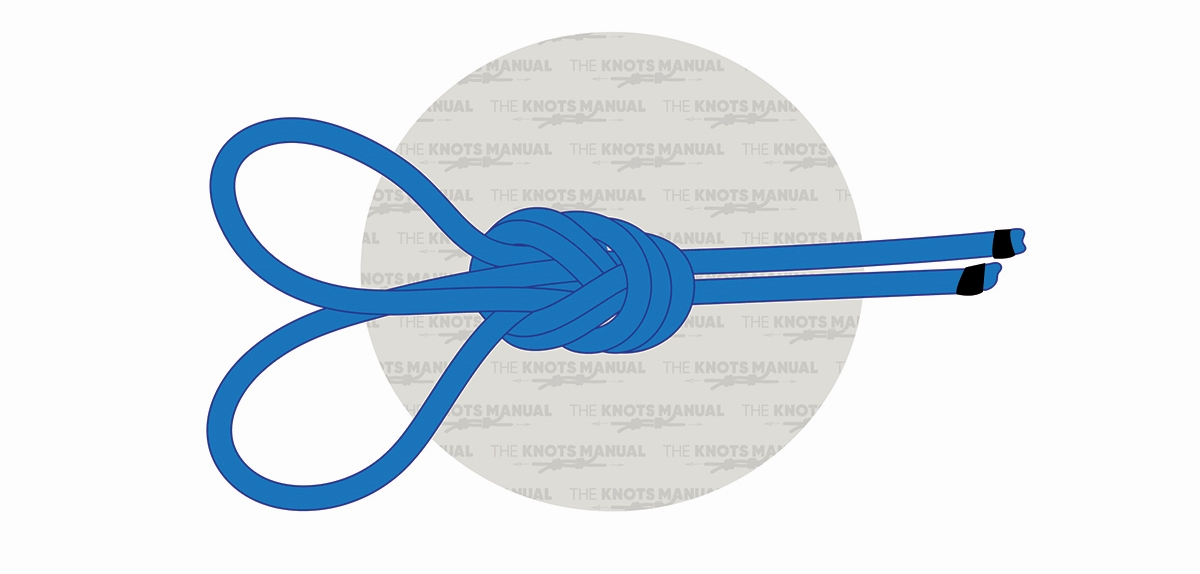
Learn how to tie a Double Figure 8 Knot (“Bunny Ears”) in a few easy steps.
Step 1:
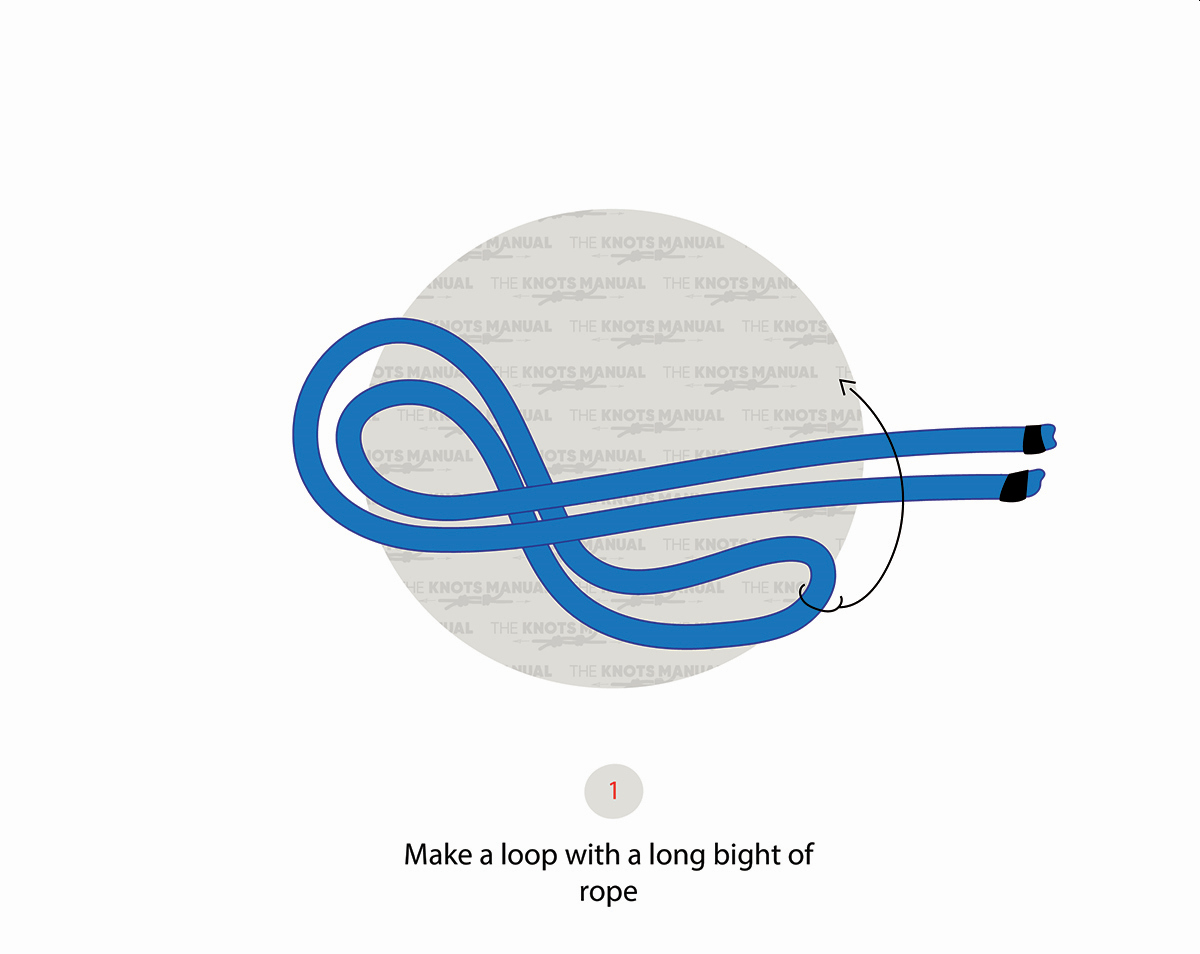
Make a long bight in the middle of a rope. Longer bight results in the two fixed eyes being longer.
Step 2:
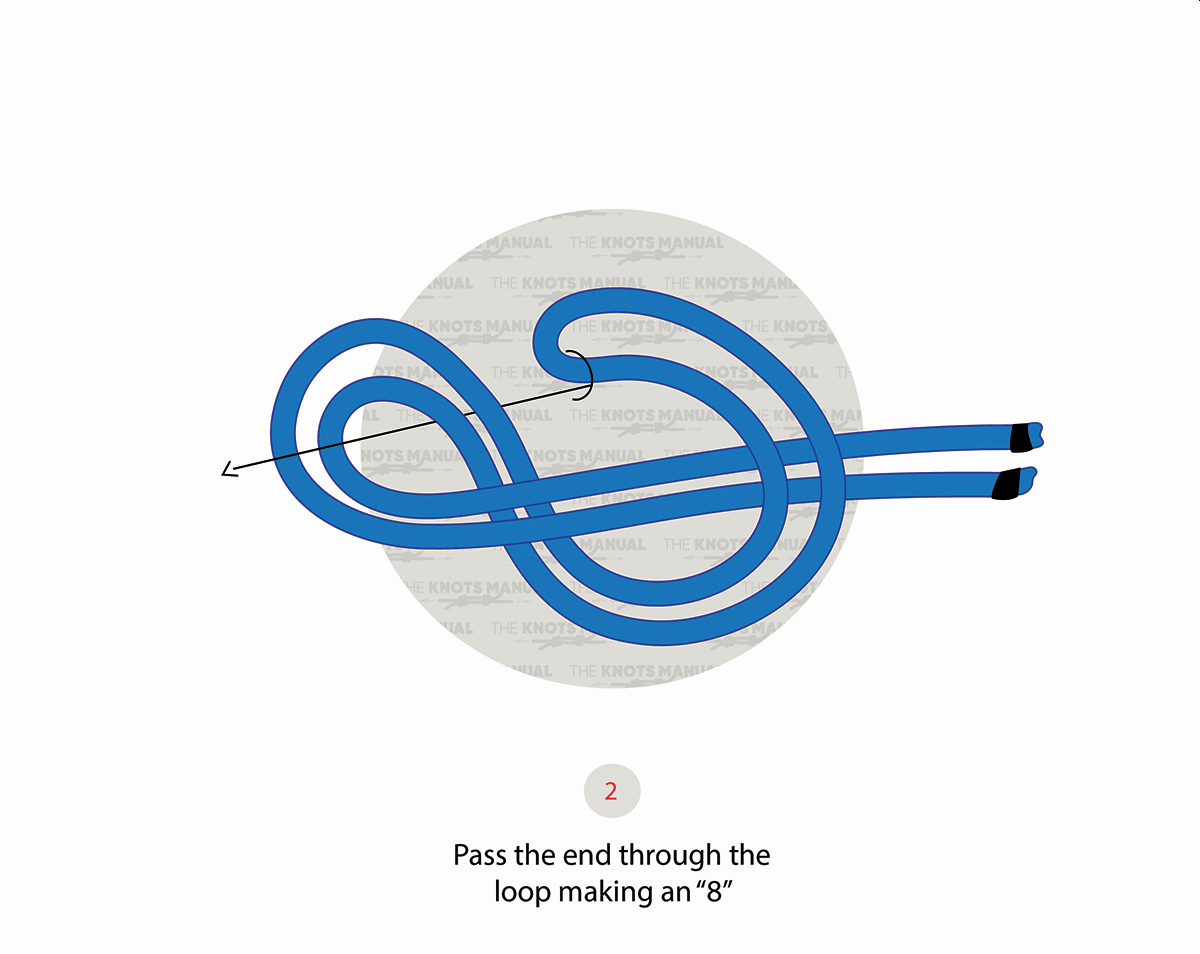
Take the bight, and go under the rope, over, again under, and pass it through the loop that you just formed.
Step 3:
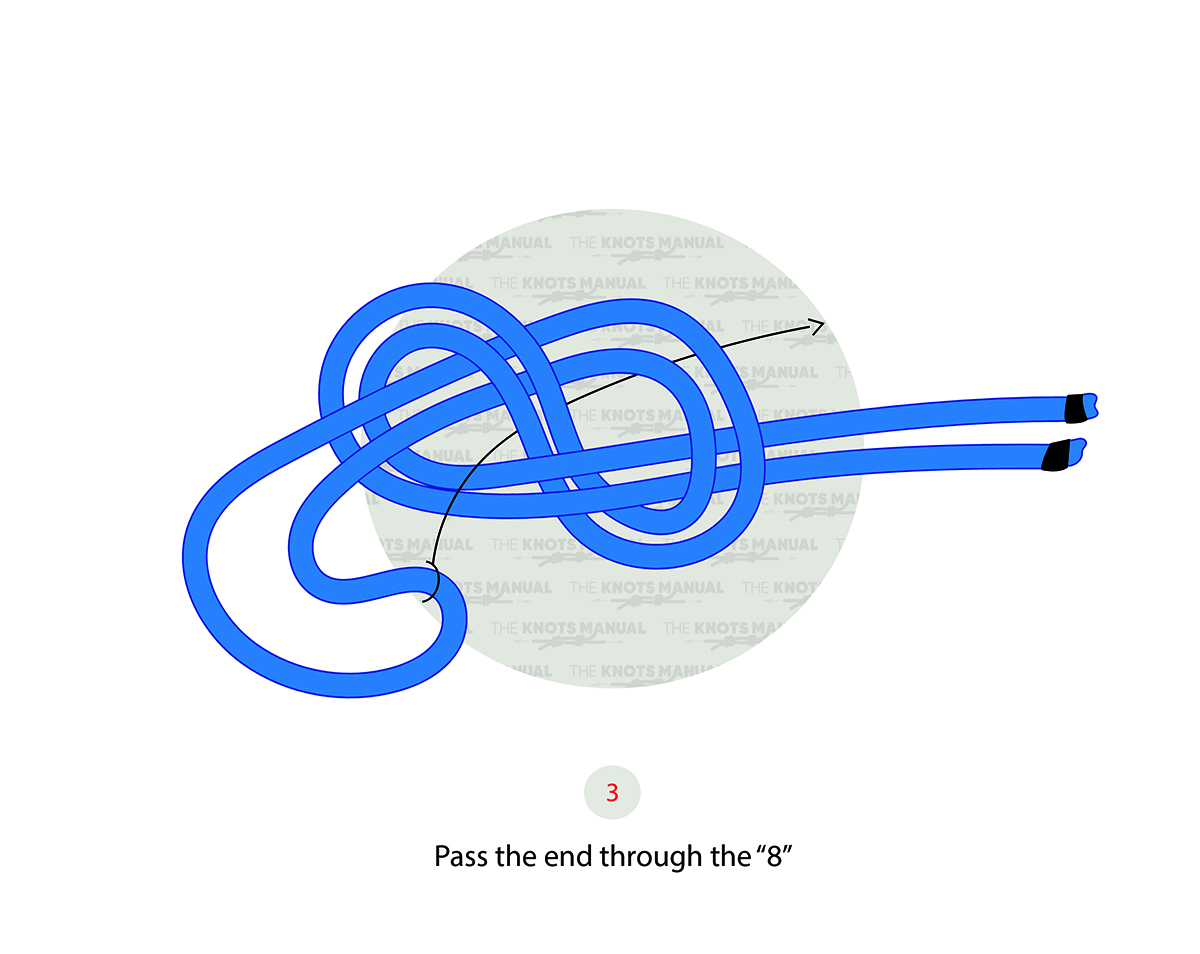
Go back through the loop with the end of the bight, but not fully (forming 2 loops that will become the fixed eyes later on).
Step 4:
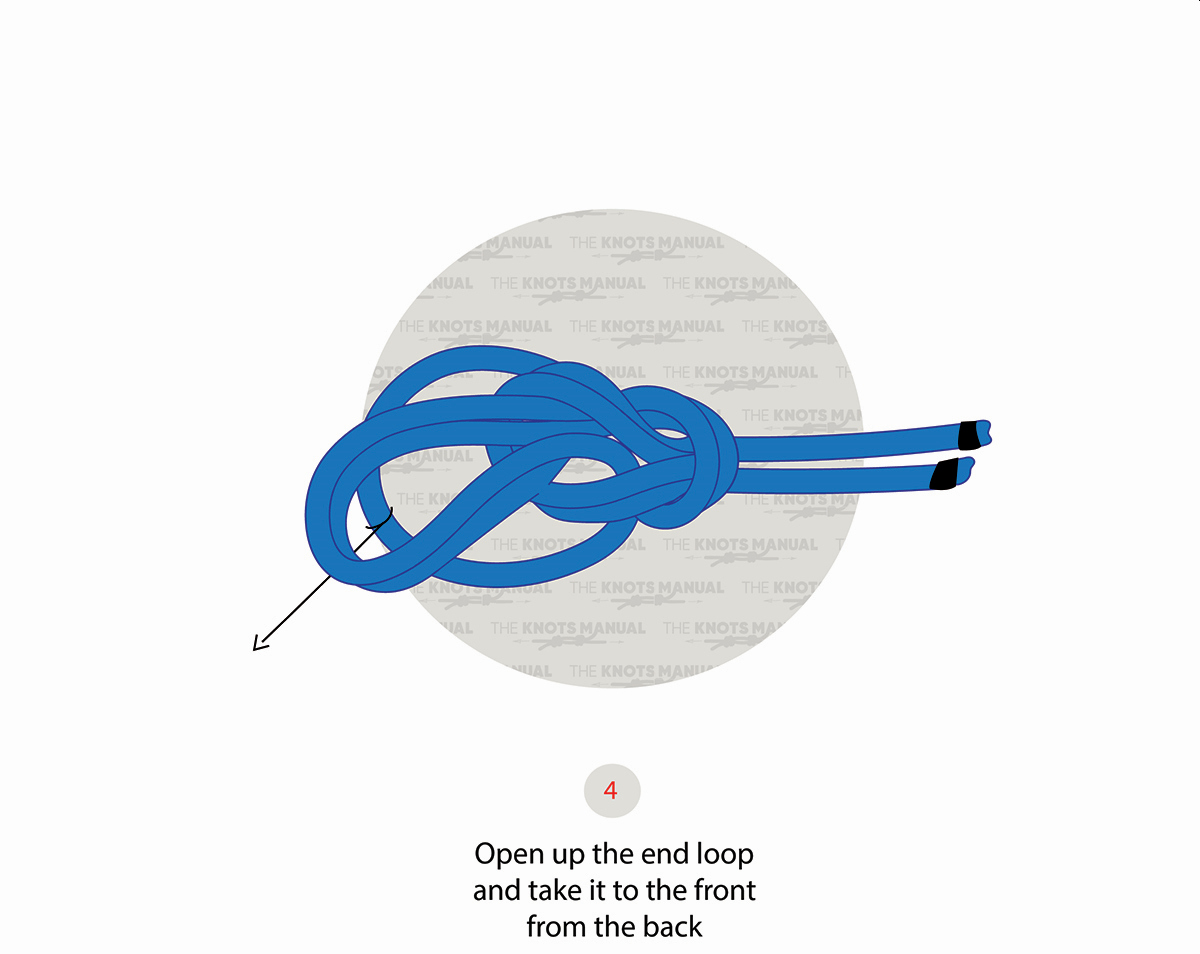
Take the end of the bight and go over the whole knot to the opposite side.
Step 5:
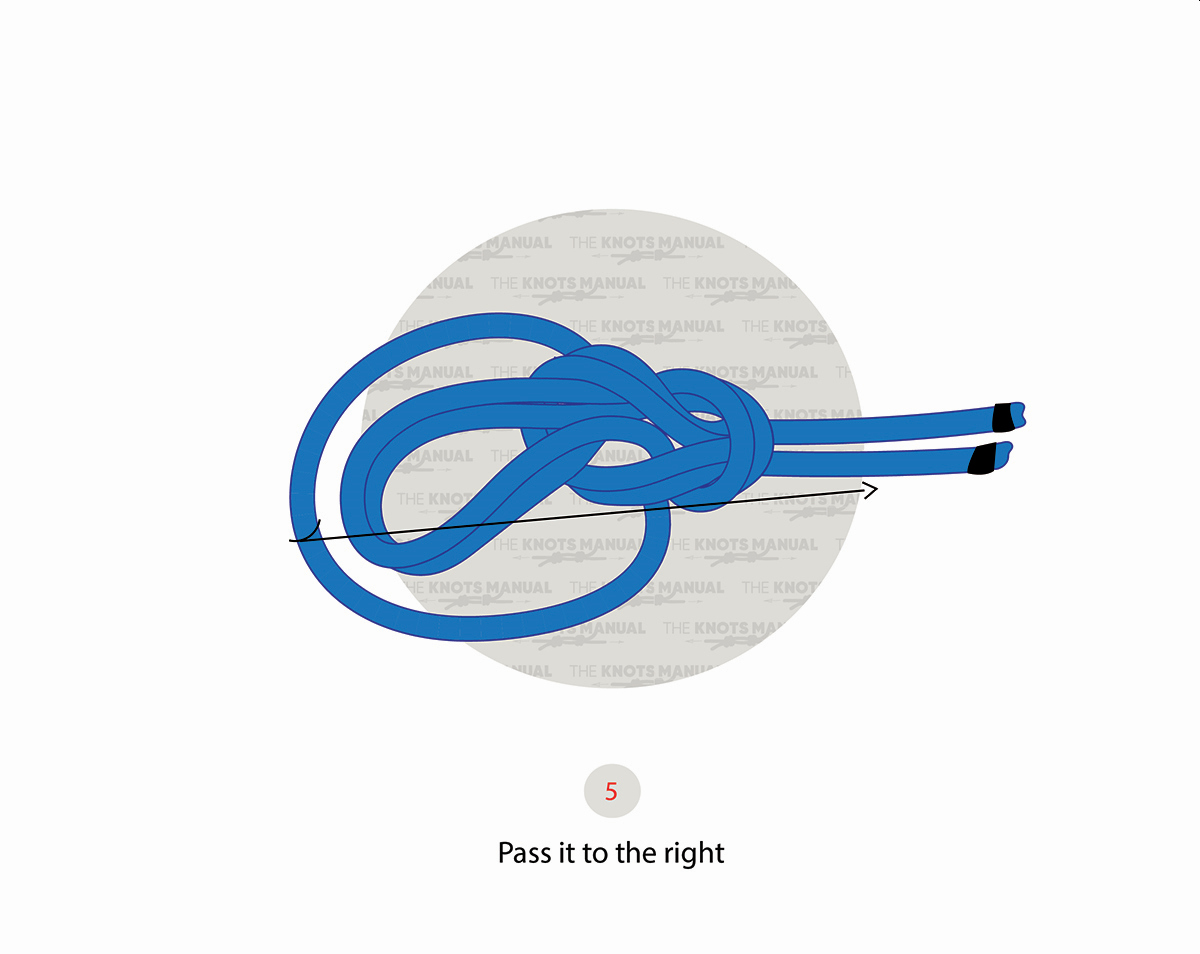
Continue moving the end of the bight over the whole knot.
Step 6:
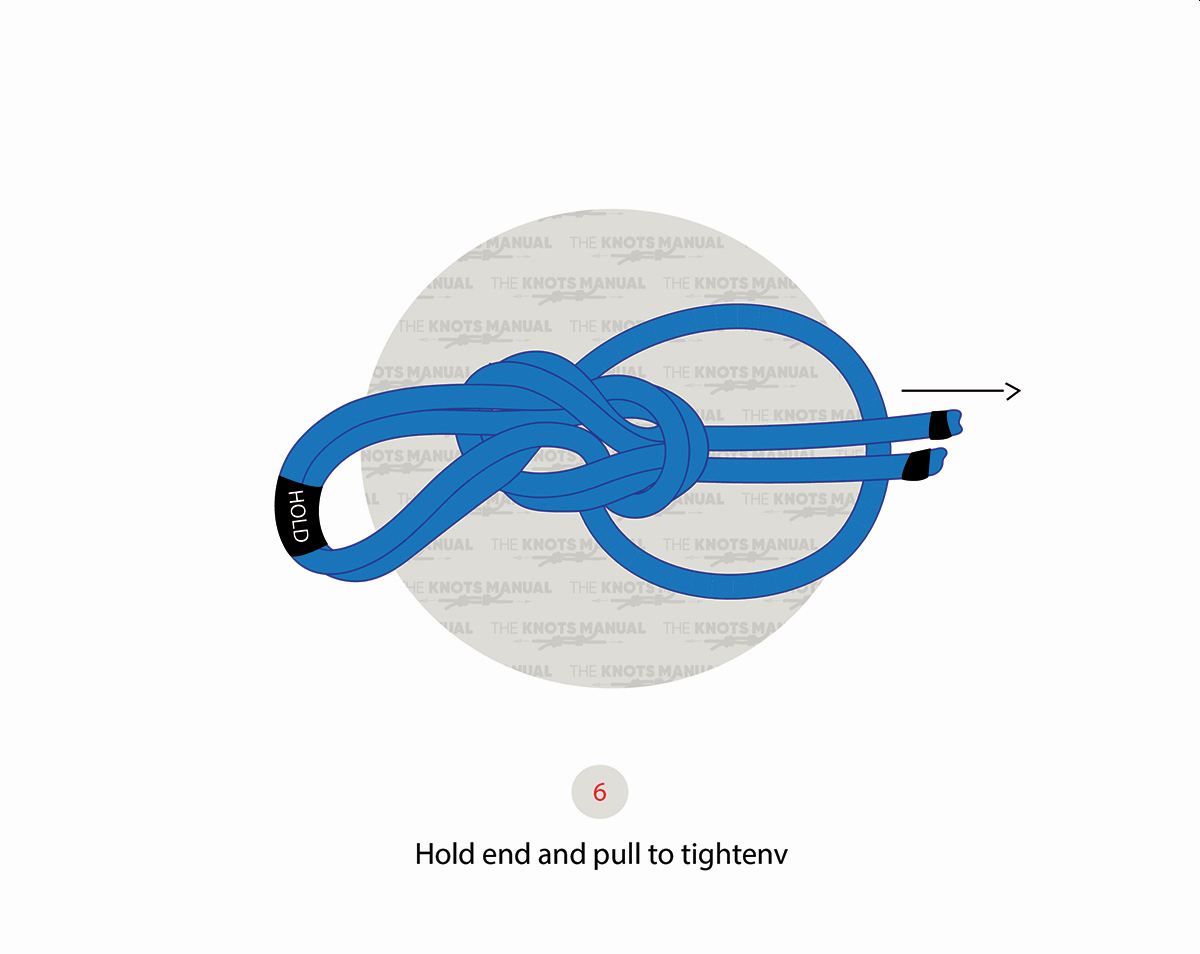
Hold the two loops that you created in step 3 and tighten the knot.
Step 7:
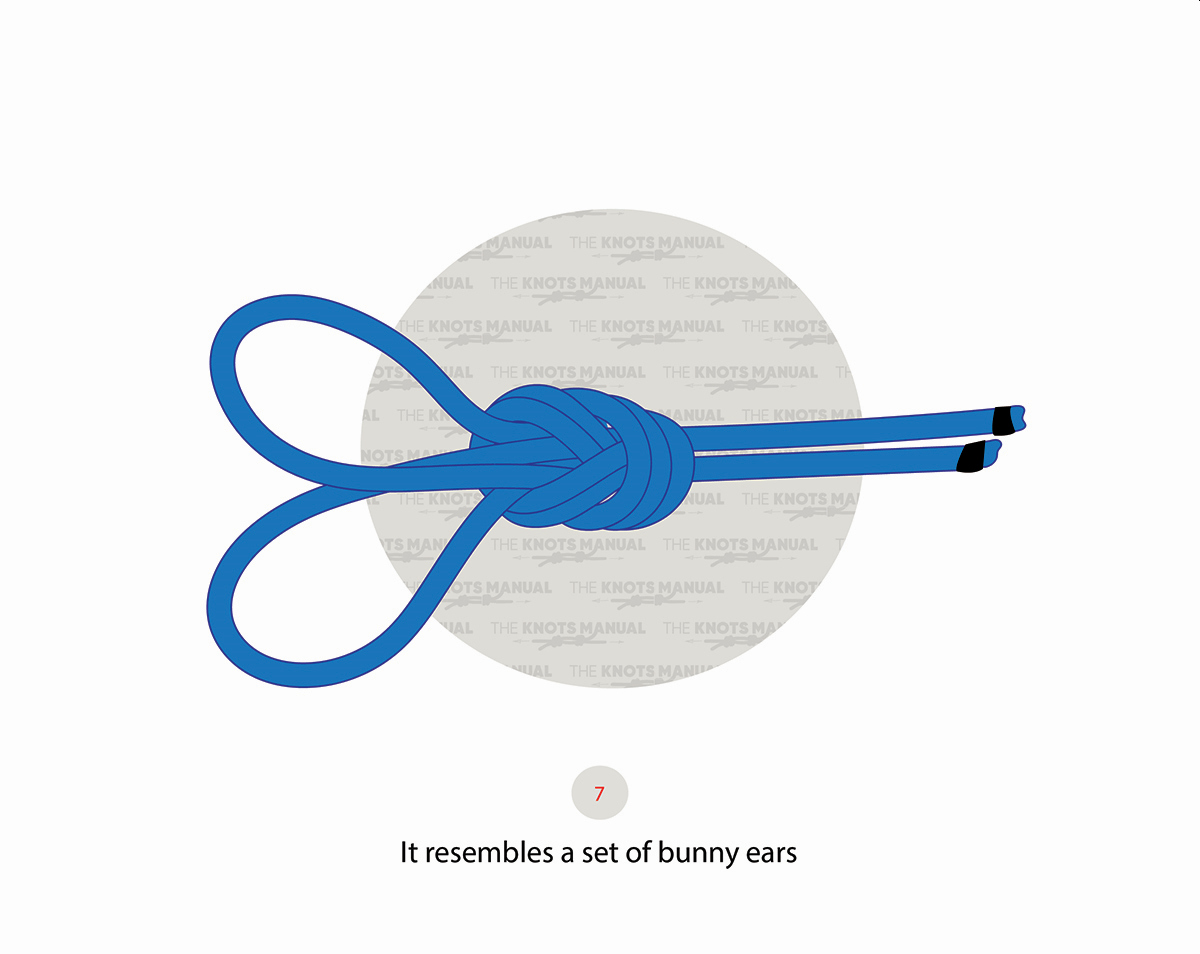
The final knot should have 2 fixed eyed (bunny ears), two parallel ropes on each side, and three parallel ones at the bottom.
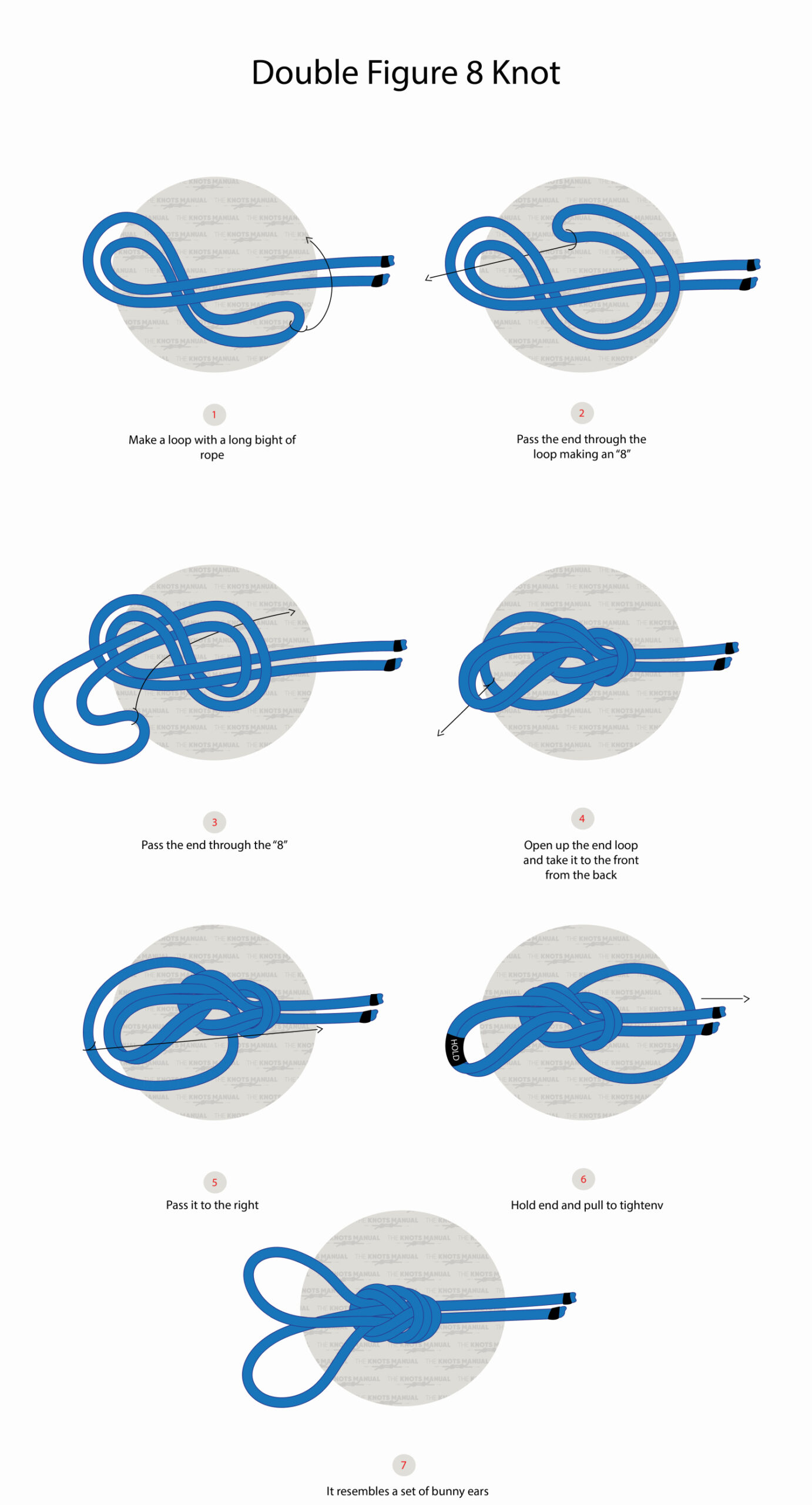
Frequently Asked Questions
Can the Double Figure 8 Knot Also Be Used in Fishing?
You can definitely use the Double Figure 8 knot in fishing for creating attachment points in the middle of your line. But in fishing, the Double Figure 8 knot is often confused with another type of knot. What fishermen refer to as the Double Figure 8 knot, is two Figure 8 Knots tied in opposite directions with passed lines through them, that tie into each other when pulled. This creates a very strong knot to hold the hook in place.
What Happens if One of the Loops on the Double Figure 8 Knot Breaks?
Testing shows that when only a single loop of the Double Figure 8 Knot is pulled and the other one is left empty, the other loop will stay intact. The empty loop won’t tighten and will still stay in place. In fact, this knot is more likely to break around the knot, not each loop. This means that you can use this knot for attaching into two anchor points because if one breaks, the other one will work as a backup.
